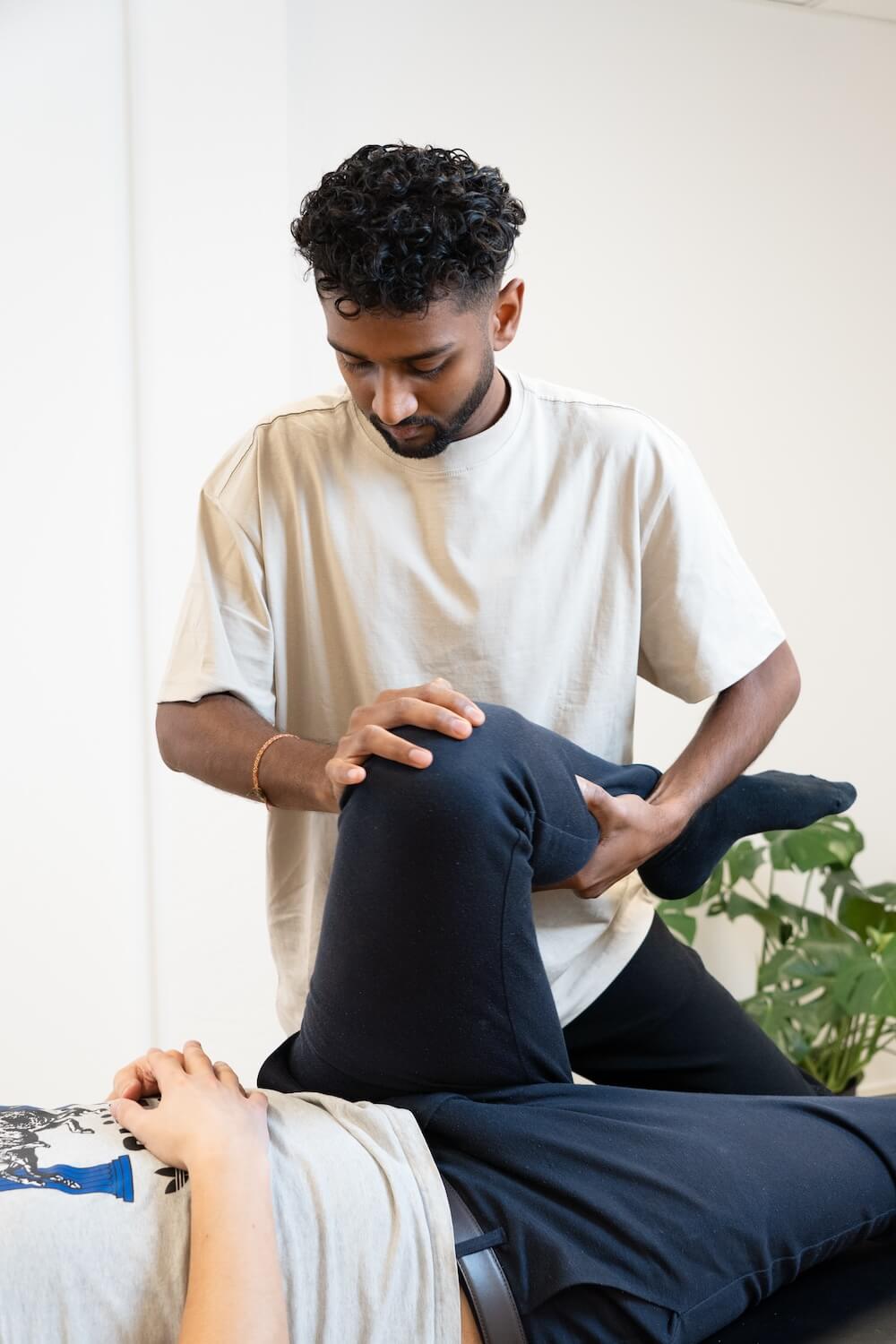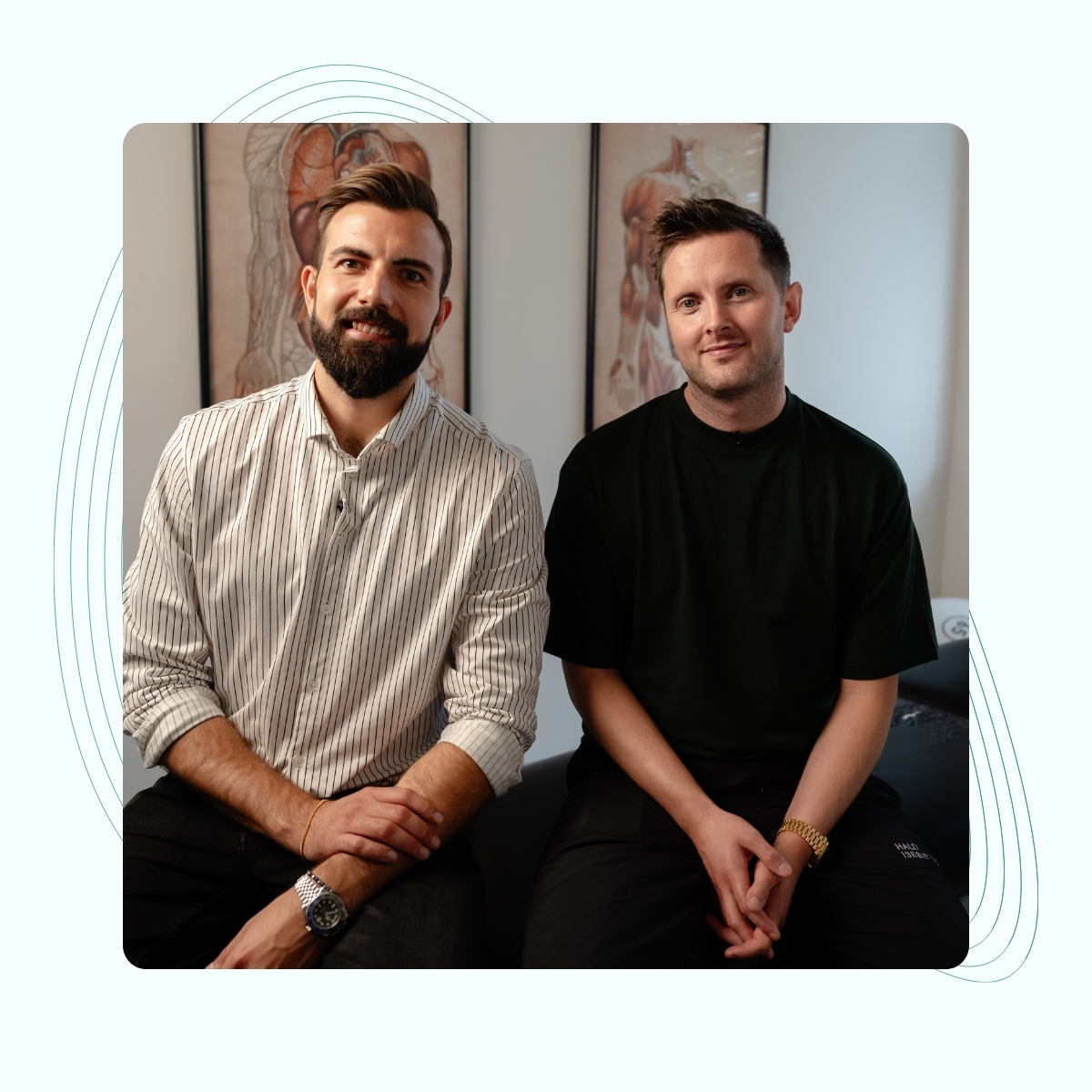We treat
Knee pain
Learn more about knee pain
Knee injuries
A big part of the adult population runs, and a lot of them suffer a running injury every year, which means they cannot maintain their active lifestyle.
Knee pain is one of the most common running injuries, and a decent amount of runners have some form of knee injury during the course of a year. Some part of women and men experience knee problems on an annual basis. almost all schoolchildren have had knee pain, but only some seek medical attention.
Jump to section [Vis]
Why do i have knee pain?
Pain in and around the knee can have many causes, and can be difficult to pinpoint. What is not difficult is to notice where and when it hurts. Here you are the specialist. It can be starting pain when you wake up in the morning, pain when walking up stairs, pain when running, pain when exercising, your favorite sport, pain at rest, or nighttime pain. Regardless of where and when you feel your pain, we can help you. You may have tried many different stretches, cold, heat and foam rolling, but if the cause is not found, you will only experience short-term pain relief.
The knee is affected by many different structures, and it is never just the knee itself that is the problem.
The pattern of your pain tells us what problem may be causing you, not to respond to the things you have tried.
There are many types of knee injuries, but the most common ones are described below:
Anterior knee pain (patellofemoral pain syndrome)
The pain is located in front of the knee, around or behind the kneecap. The pain most often occurs during long runs, but in severe pain conditions the pain can occur suddenly.
Causes of anterior knee pain are often due to pelvic misalignment (crooked pelvis), back pain, sciatica, piriformis syndrome, and unstable pelvis and knees.
Bastien is sharing more about knee pain in the video below

Cartilage damage (chondromalacia)
Cartilage damage can occur at the back of the kneecap, on the thigh bone or on the lower leg bone. These injuries occur when the kneecap itself slips out of place. Symptoms of chondromalacia include fluid accumulation in the knee, pain behind the kneecap, a feeling of warmth or lack of mobility in the knee.
Causes of cartilage damage are often traumatic or related to accidents to the knee.
Irritated mucous membrane (plica)
The plica is part of the anterior capsule of the knee joint. It is a kind of thin mucous membrane that encapsulates the synovial fluid in the knee. Overuse of the plica can cause it to become irritated and swollen, which ultimately makes it thicken. The pain is experienced as a pressure around the kneecap, which often hurts. Longer runs can cause inflammation and fluid accumulation in the knee.
Causes of plica pain are often pelvic misalignment (crooked pelvis), back pain, sciatica, piriformis syndrome, bladder problems (incontinence or recurrent cystitis) and instable pelvic and knee.
Runner’s knee (iliotibial band syndrome)
Runner’s knee refers to inflammation of the attachment and/or lining of the long, wide tendon (tractus iliotibialis) that runs along the outside of the thigh to the top of the shin bone. The condition is experienced as aching/shooting pain on the outside of the knee, which can radiate along the outside of the thigh and lower leg when the knee is stressed. When the condition has developed into regular runner’s knee, the aforementioned symptoms will also be experienced the day(s) after the run.
Jumper’s knee (infrapatellar tendinopathy)
A strong tendon, the jumper’s tendon, originates from the kneecap and attaches to the lower leg bone. This tendon is important for power transfer during explosive activities, such as interval running, jumping/sprinting or hill running. Overuse of the tendon can lead to inflammation. The symptoms will be pain under the kneecap, which is provoked by strain on the knee, such as when climbing stairs, jumping or transferring weight onto the knee itself.
Knee Pain
Pain is a very complex feeling, and is the result of both physical and emotional components. Pain is subjective, and will be experienced differently from person to person. The degree of pain may depend on, among other things, previous experiences with pain, stress, emotions, your perception of the injury, fear of how it will go, social relationships, the importance of the injury to your everyday life and the duration of the pain (acute/chronic).
The way the pain feels can indicate which structure is causing the pain.
Pain from the skin, muscles and bones can be constant, piercing, aching and usually easy to localise. Pain from organs can be more diffuse, deep and radiating to areas such as the shoulder, back or legs.

Knee Pain After Running
Knee pain during warm-up for running, or after running, is often a sign of inflammation. It may feel like everything is fine once the knee has warmed up, but when the knee gets cold again, the pain comes. This is a result of overload and inflammation. The tendons can no longer keep up with the load they are exposed to. The muscles have a good blood supply, where the tendons are not so well supplied. This means that it is often the tendons that cannot keep up if we start training more. Structures that can become overloaded and inflammatory in connection with running can be muscles, tendons, bursae, meniscus, ligaments, fat tissue (shock absorber in the knee) and the cartilage on the back of the knee.
Pain on the Inside of the Knee
Pain on the inside of the knee can be caused by various structures. Sharp pain on the inside of the knee, very specific location, and a tendency to lock the knee may indicate irritation of the meniscus on the inside. Another structure that can cause meniscus-like pain is the knee’s mucous membrane fold – plica. This is located close to the femur bone and can cause pain in the cartilage if it is overloaded.
On the inside we also have the medial ligament, which is a lateral stability-giving ligament.
Pain on the inside can also be caused by inflammation of the bursa (bursa pes anserinus), which reduces the function of the muscles that cross the inside of the knee. There are 3 muscles here, with slightly different functions. The sartorius muscle sits from the iliac crest and slopes down over the thigh, and is attached to the inside of the knee. The gracilis muscle is the longest of the thigh’s inward adductors, and sits from the symphysis down to the same place. The semitendinosus muscle is the medial part of the hamstring muscles, and goes from the ischial tuberosity to the inside of the knee. Tightness or weakness in these muscles can cause irritation of the bursa. Last but not least, there can be radiating pain to the inside of the knee. This can be due to irritation of the nerve to the inner thigh, if this is pinched from the back, or somewhere in the passage down through the groin.

The knee is a biomechanical unit
If we look a little more structurally and mechanically at the knee, it is a very mobile joint. This has both its advantages and disadvantages. It gives us an incredibly large freedom of movement, but on the other hand, it is also a joint that very easily compensates for, among other things, reduced strength or mobility in the hip and ankle. Most people have probably been doing several exercises for the knee and hip, while rarely taking care of what goes on below the knee. Mobility, strength and stability in the ankle and foot are of great importance for the knee. The foot is the first joint that must absorb shock when we walk, run and jump. On the front of our shin is the tibialis anterior muscle. Its function is to lift the toes up when we walk, so that they do not hit the ground.
If this muscle is not strong enough, it cannot lower the foot in a controlled manner when we walk and run. This will result in a harder landing, which stresses the knee.
The knee must compensate for the shock that the tibialis anterior muscle does not absorb. The same applies to the calf muscle. It is also very important for absorbing shock, in order to protect the knee. Unfortunately, this is often only trained with the knee extended, which is not the only context in which it is supposed to slow the body down after a jump. Here, most people will land and bend their knees, rather than landing with their knees extended. Therefore, the calf muscle should be trained differently to accommodate the situations in which it has to work.
We have long been told that the knees should not go beyond the toes, but here it seems that healthy knees require good ankle mobility. SO good ankle mobility that the knees can go beyond the toes. With poor ankle mobility, it is often seen that the arch collapses to allow more ankle movement. Unfortunately, this means that it becomes more difficult to control the knee. When the arch collapses, an inward rotation of the lower leg and thigh occurs, which results in knock knees. Training the foot and the arch is therefore of great importance for maintaining the stability of the knee.
Knee pain can originate from other parts of the body.
The body has an amazing ability to compensate. It does it all the time, and with many different things. To make it simple, we can think of the body’s ability to compensate as a budget. The body has 100 points to recover from every day. Let’s say that the limit for when we experience pain is 80 points. Then we only have 20 points left, and that’s when things start to get critical. The entire body with the brain, heart, lungs, gastrointestinal tract, torso, arms and legs costs 20 points in general maintenance. You like to run every day, so that costs you an extra 10 points. Then the hedge needs to be cut, that also costs 10 points. You might be a little busy at work, that costs you 10 points. There’s a bit of a stomach problem, that costs 20 points. In the weekend you go to a party, have a few beers and maybe smoke too. That costs another 10 points. All of this together costs 80 points. Enough to stay within budget and not feel any pain. Suddenly, there is uncertainty at work, or maybe a death in the immediate family. It costs 20 points. and now you are over budget.
The body will always prioritize the brain and torso first, so now there is no time to take care of the knee anymore, and you suddenly experience pain, even though you don’t feel like you have done anything different.
Pain is complex, and doesn’t always have a simple explanation. Here we can help you find out what your body is compensating for. We may not be able to help with, for example, a difficult situation at home, but with the other things that together make the budget collapse.

Knee pain at night
Pain at night, at rest or stiffness when you wake up in the morning are typical signs of inflammation. Inflammation is a reaction that the immune system triggers when the body’s cells (connective tissue, ligaments, cartilage, etc.) are damaged. The body heals and recovers when it rests. Here, the body is at rest, and it has the energy to repair damaged tissue. The body is able to heal most injuries and overloads. When we train and move, we constantly create microtraumas in the tissue. If we are healthy, fit, well-functioning and remember to give the body time to heal, the tissue becomes stronger and stronger over time. If the body does not have optimal conditions for healing, it will eventually become overloaded. A frequent cause of overload is that we do not give the body enough time to heal between training sessions.
The body heals slower and slower with age, so if you have just started your old running program that you used 10 years ago, it is not certain that your body can keep up at the same pace.
In addition to lack of time to heal, the body can be challenged if the blood supply to the knee is disrupted.
Nerve and blood supply may be disrupted further up your body, even if you don’t notice it yourself. The nerve to the front of your thigh and knee comes from the lower back and must pass under and through many structures before it reaches the knee. Likewise, both arteries and veins must be affected so that there is not the optimal supply of oxygen, or removal of waste products from your knee. Disturbances of arteries and veins can be caused by them being pinched. Causes of this can be gastrointestinal problems, back stiffness, stiffness in the chest, difficulty breathing or digestive problems. In order for your body to heal and recover, the intestinal system must function well. The body’s immune system is located in the stomach and intestines. Therefore, if you experience problems with digestion, the body may not have the energy to recover optimally.
Knee pain after knee surgery
The first phase after knee surgery is about getting the swelling down and starting to get some movement back in the knee. It is particularly important to restore the knee’s ability to fully extend, after which the ability to bend will gradually come later.
There can be a big difference in what you have been offered in rehabilitation after your surgery. Some are closely monitored, and others may only be given a sheet of exercises. This of course also depends on what you need to return to after the surgery. After an operation, it is important to focus on getting the knee mobile, and then building up the strength again. Some experience that they do not feel the same confidence in using the knee, which over time can lead to many compensations, stiffness and reduced strength in the knee. A healthy knee is flexible and strong, also in extreme positions. A healthy knee also requires a good connection from the brain to the knee. This means your sense of the knee’s position in relation to the rest of the body, as well as a good ability to control the knee without being dependent on seeing how it moves.

Pain on the Outside of the Knee
Pain on the outside of the knee, like the inside, can have different causes. The meniscus, bursa, and ligaments can cause the same pain on the outside as on the inside (see “Pain on the inside of the knee”). There is also a bursa on the outside, which reduces friction from the large tendon sheath we have on the outside of the thigh. The tendon sheath is held tight by a small muscle, the Tensor Facia Latae. If this muscle is tight or overactive, it pulls on the tendon sheath and creates more friction, and thus inflammation in the bursa. This is often referred to as “runner’s knee.”
Radiating pain on the outside of the knee can occur when the nerve is pinched to the outside of the thigh. This nerve can be affected from the lower back, and down through the course from the lower back to the outside of the hip.
Pain in the Back of the Knee
Pain and swelling at the back of the knee may be a so-called Baker’s cyst. This is not a problem in itself, but the cyst/swelling is a symptom of injury or overload in the knee. Structures that can cause a Baker’s cyst include the meniscus, ligaments and cartilage. Pain at the back of the knee can in many cases be caused by irritation of the sciatic nerve. The large nerve comes from the lower back and sacrum, down through the hip, through the buttock and down along the back of the thigh. Just before the kneecap, it divides into the tibialis nerve and the peroneus communis nerve. Irritation of the sciatic nerve can cause symptoms in the back of the knee if it is pinched somewhere in the process from the back to the kneecap. At the back of the knee we have the popliteus muscle. This helps to stabilize the knee, as well as to internally rotate the large lower leg bone. Irritation and overload of this muscle can cause pain at the back of the knee, and in some cases also on the outside.
Avoid knee injuries
The knee is a joint that is located in the middle of two very important parts of the body, namely the pelvis and the foot. When running, the foot receives the mechanical load from the ground, and the pelvis distributes the load to the rest of the body. The role of the knee is to distribute and transmit the load from the foot to the pelvis. Therefore, it is extremely important that the ankle and pelvic joints have optimal mobility, as most of the muscles and connective tissue that pass to the knee originate from the foot and pelvis.
Dysfunction in the pelvis and foot can therefore contribute to overloading the knee. By maintaining flexibility in the mentioned joints, knee injuries can be kept at bay and knee pain can be avoided.
Tips to avoid knee injuries
- Listen to your body – if your legs hurt or feel heavy and tired, take a break for a day or two.
- If you have a sedentary job, it is extra important to work on your body’s flexibility in combination with running.
- Think about what you eat – foods that give you bloating and stomach cramps have a negative impact on running.

Good advice for knee pain
Acute knee pain can be relieved by applying heat or cold. Neither will make it heal faster, but the change in temperature itself will relieve the pain. If swelling occurs in the knee, it is a really good idea to have compression applied. The swelling alone can cause pain, as arteries and veins are stressed by swelling. Compression can be in the form of a bandage that you roll around the knee, or an elastic bandage that you put on. In addition to compression, it is a good idea to keep the knee above heart level. When we stand upright, there is a lot of fluid pressure in the knee, as it is far below the level of the heart. The heart ensures that the blood is transported around, and by bringing the knee up to heart level, the fluid pressure is reduced so that the knee is less likely to swell, and even has the opportunity to get rid of the fluid.
To optimize the body’s own ability to get the fluid away from the knee again, it is a good idea to do venous pump exercises.
These are exercises that activate the muscles in the calf, thigh and buttocks. The exercises are done lying down to reduce fluid pressure. In addition, cycling at low intensity is really good for the body. It creates increased circulation in the knee, without straining it, and helps to drain the knee.
Knee pain in children and adolescents
Osgood-Schlatter
Osgood-Schlatter is one of the most common knee disorders among active children and adolescents. The condition typically occurs with a lot of or increased activity, and often in connection with growing up. The pain is typically located on the bony prominence on the shinbone, just below the knee (tibial tuberosity), where the patellar tendon is attached. There will typically be pain when warming up, relief of the pain when the knee is warm, and an increase in the pain when the knee becomes cold again. There will also often be pain in the morning, until the knee has started to move.
Sinding Larsen Syndrome
Sinding Larsen syndrome is very similar to Osgood-Schlatter. The most significant difference is that the pain is typically located below the kneecap, rather than on the shinbone as in Osgood-Schlatter. Both conditions are a result of greater strain than the body can recover from. Both cases are treated manually as well as with proper rehabilitation and adjustment of the amount of activity.

Pain in the front of the knee
A common cause of pain in the front of the knee is jumper’s knee. This is an overload of the patellar tendon. The phenomenon is the same as the previously mentioned Osgood-Schlatter and Sinding Larsen syndrome, but in adults it is simply called jumper’s knee. A painful condition in the tendon that transmits force from the muscle on the front of the thigh. The pain can be in and around the kneecap, or down on the upper part of the shinbone. Pain in the front of the knee can also be caused by irritation of the cartilage on the back of the kneecap (chondromalacia patellae). The cartilage on the back of the kneecap can become irritated where the kneecap does not move as it should in the guide joint.
Tightness on the outside of the hip can help pull the kneecap slightly out to the side so that it does not slide in the middle of the guide joint.
In addition, tightness in the front of the thigh and hip can pull the kneecap harder against the guide joint. This creates more friction and can therefore cause inflammation.
On the front, under the kneecap, we have the knee’s shock-absorbing fat body, the corpus hoffa. If you fall directly on the knee, the fat body can become irritated and swell. There is not much room for the fat body beforehand, so even with a small swelling, the fat body can become pinched and cause pain. At the front of the knee, we have two bursae, the prepatellar and the infrapatellar, these can become inflamed by direct impact, or as a result of overloading the knee.

Often related injuries
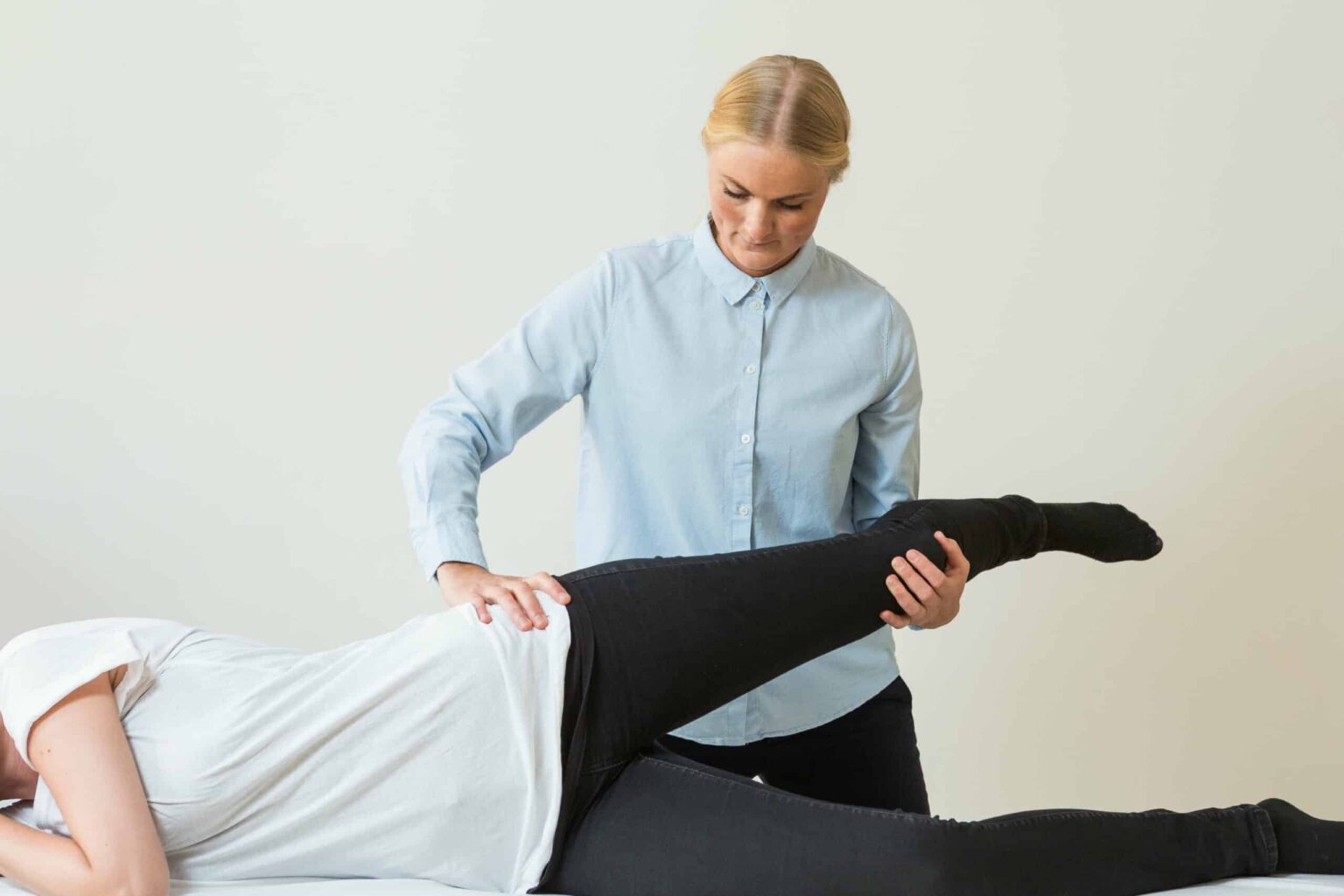
Restless Legs Syndrome (RLS)
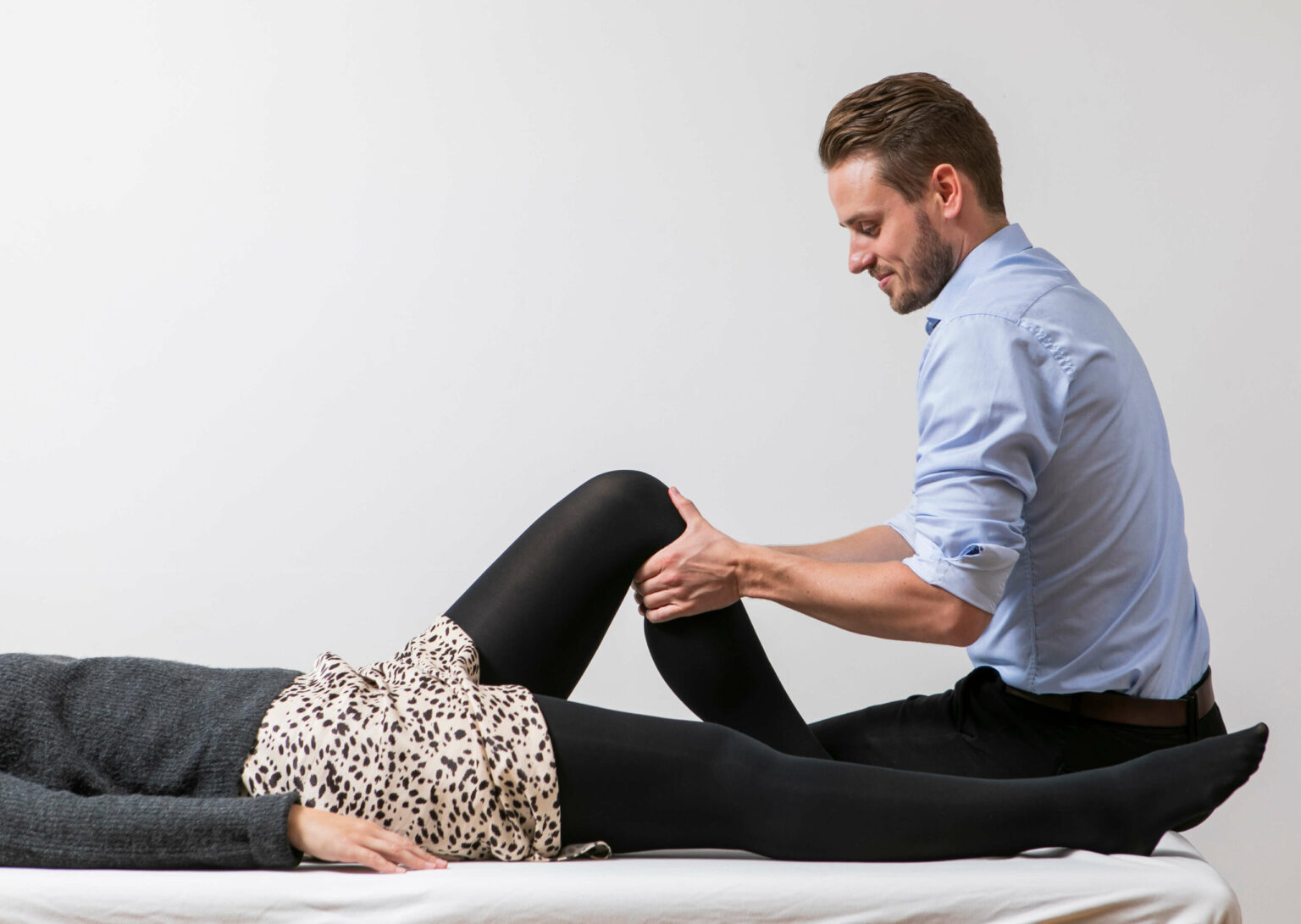
Cruciate ligament injuries – ACL/PCL
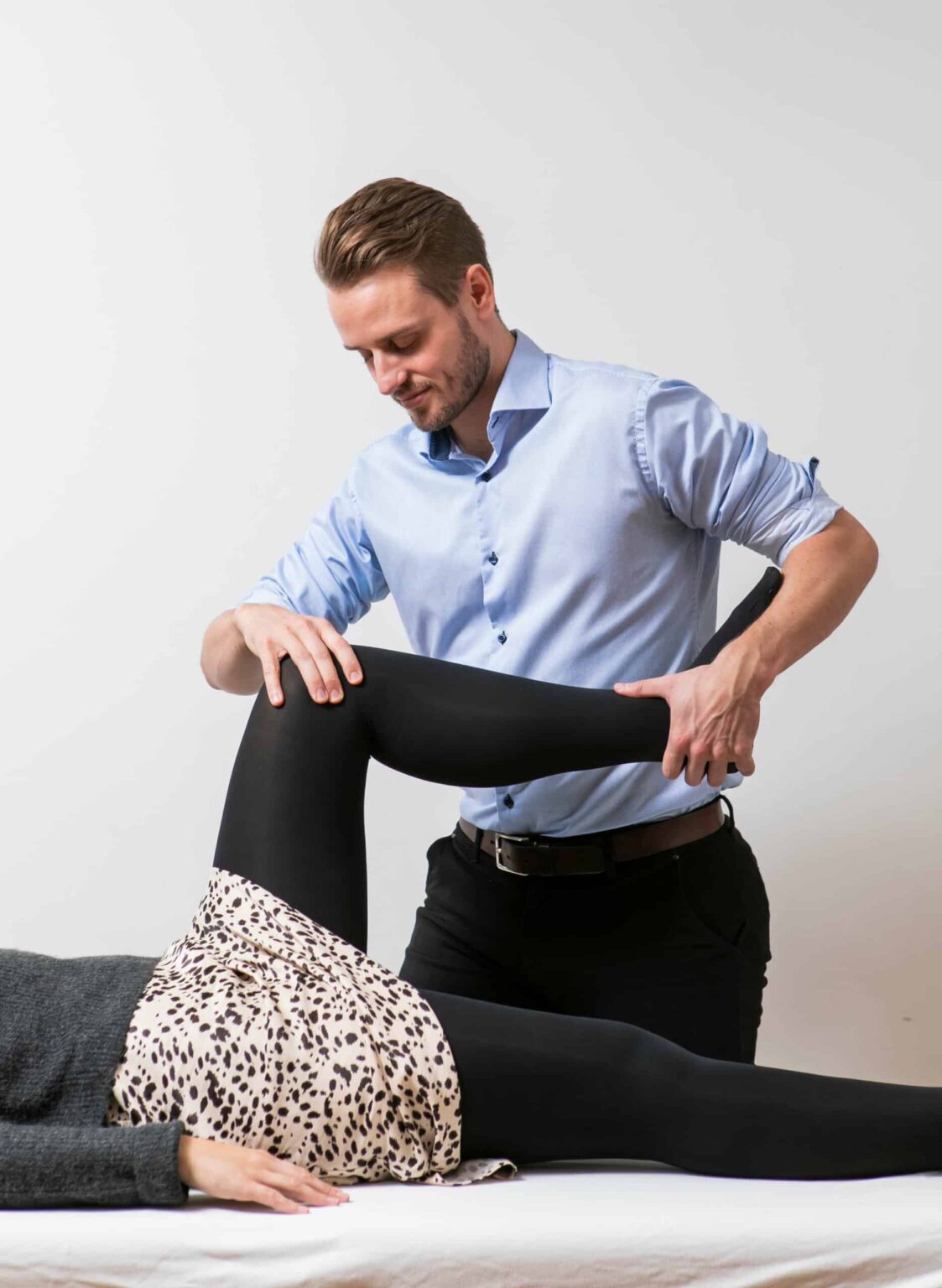
Synovial Plica
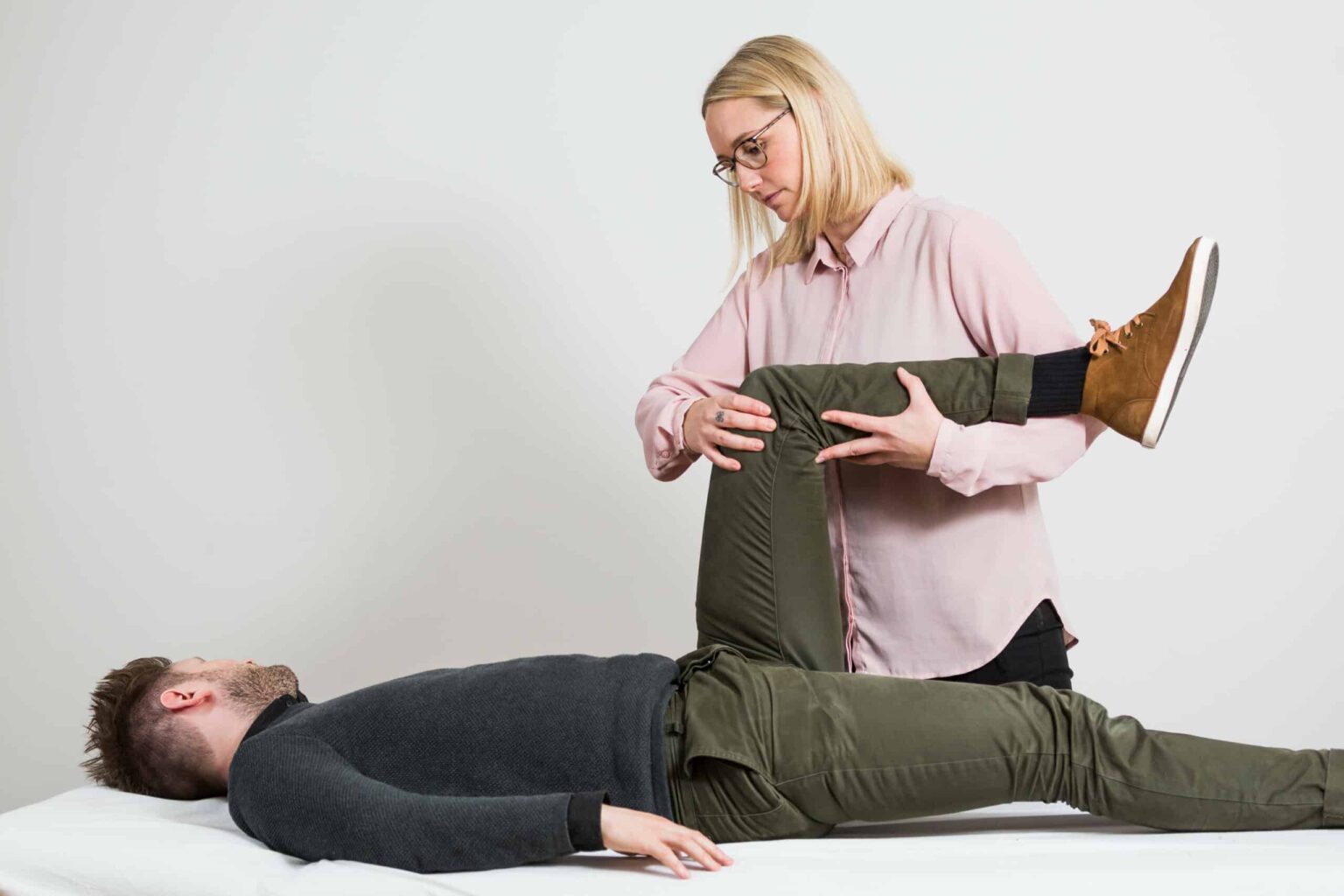
Pes anserinus tendinitis
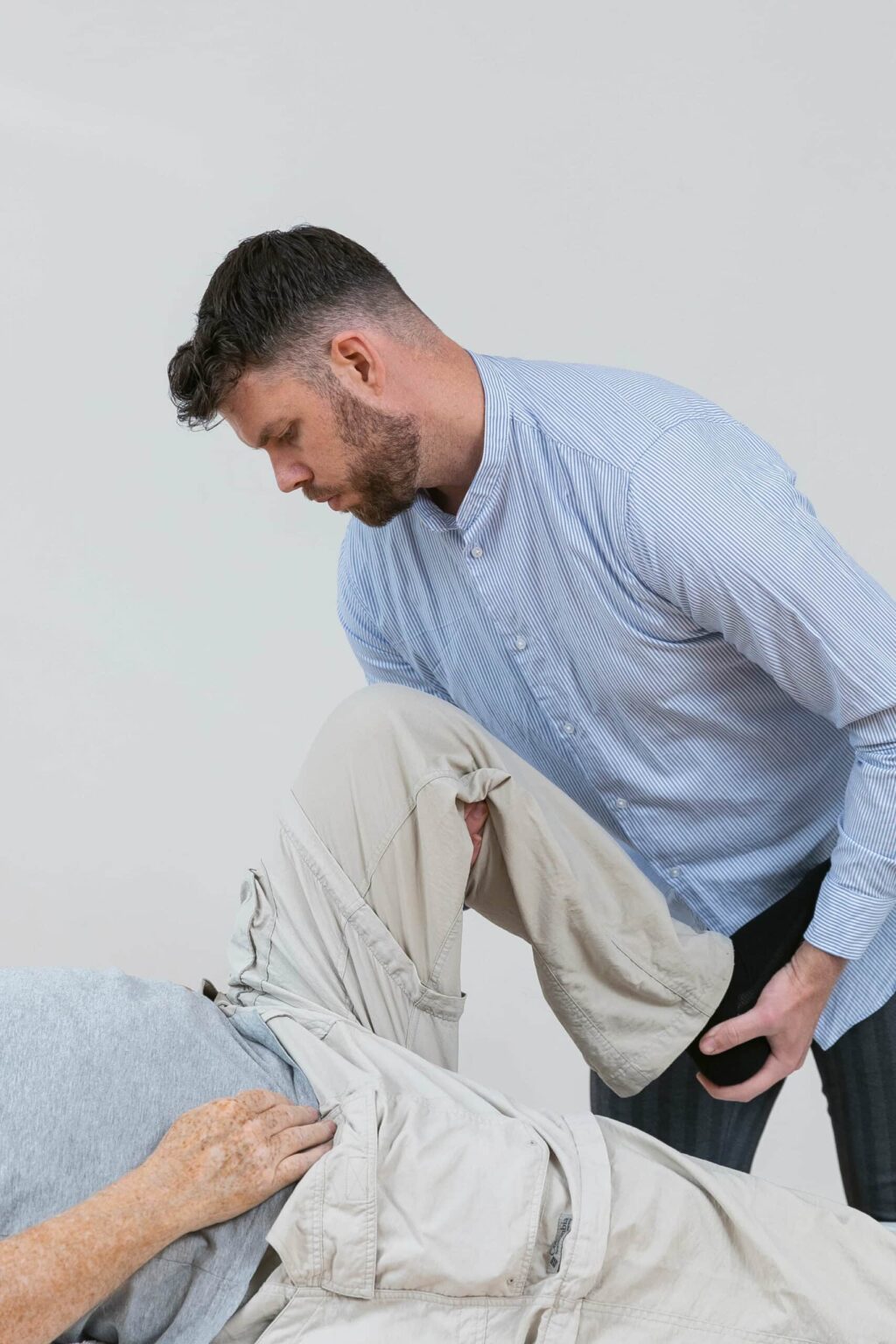
Jumper’s knee

Knee plica inflammation
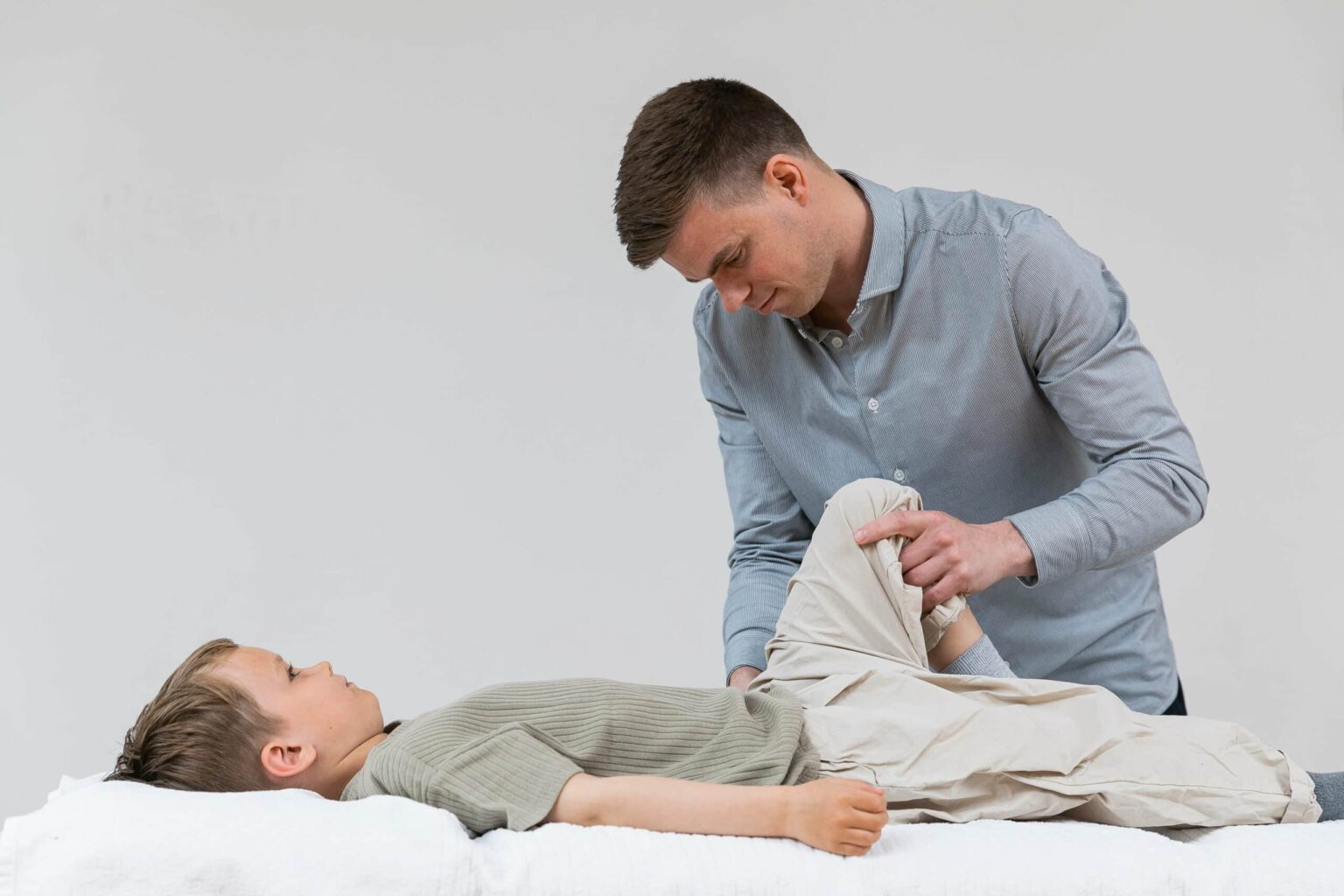
Osgood Schlatter
